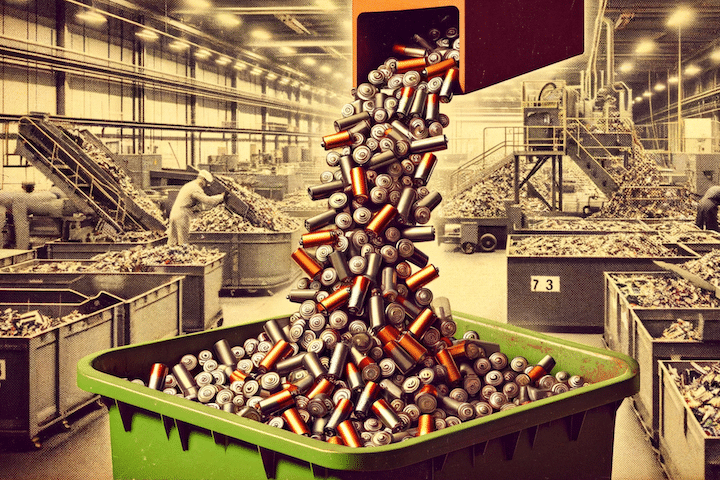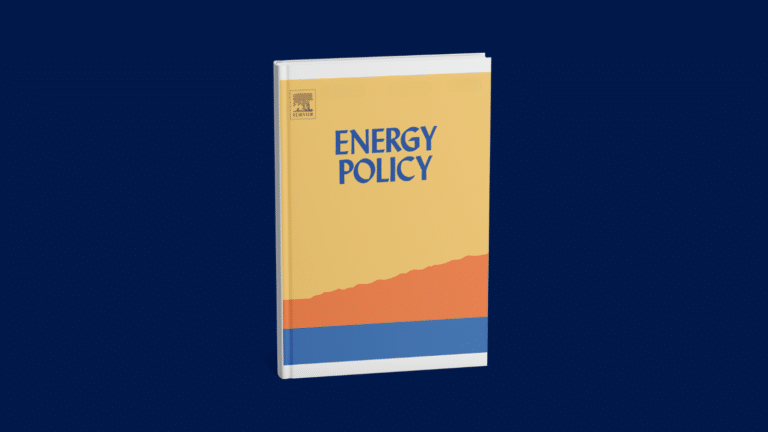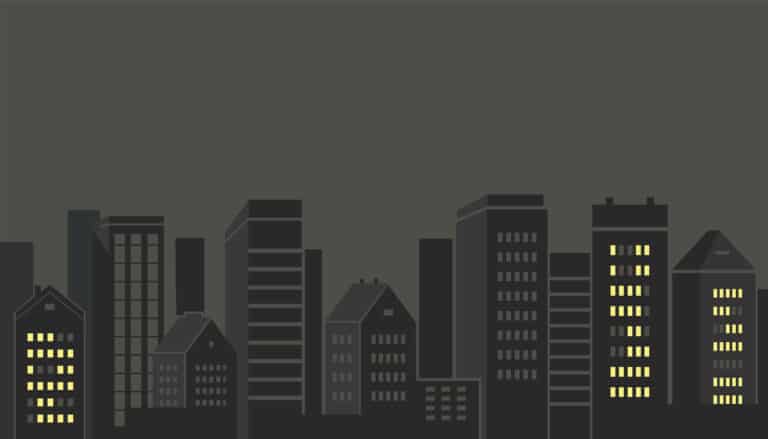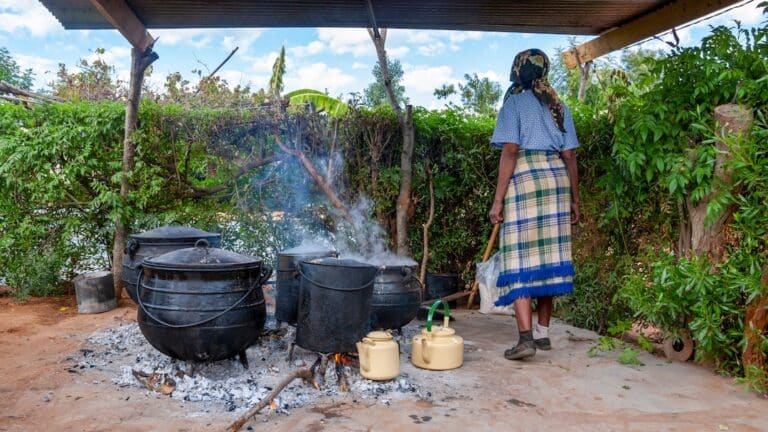Sharon Levine: [00:00:00] Let me go back to where I started. I was born in New Orleans at Charity Hospital. I was raised in St James Parish in the fifth District, and I grew up right over here in St James. [00:00:13][13.1]
Melissa Lott: [00:00:14] This is Sharon Levine. She’s from St James Parish, a part of Louisiana that sits on the West Bank of the Mississippi River just between Baton Rouge and New Orleans. [00:00:21][7.5]
Sharon Levine: [00:00:24] My parents lived in St James also, and we grew up with gardens, chickens, cows, hogs, a lot of fruit trees, a lot of working on the farm, picking pecans and selling pecans, picking the vegetables, bringing them to New Orleans, to the French market for sale. And that money was used for school supplies, school clothes, whatever we needed in our homes. [00:00:53][29.2]
Melissa Lott: [00:00:54] But as Sharon got older, she noticed some changes in her community. Bit by bit, the petrochemical industry started to arrive. [00:01:00][6.0]
Sharon Levine: [00:01:01] They started to change from the first industry came in. My daddy and everyone thought it was wonderful that we had an industry coming into our little town of St James and we thought that would bring jobs and bring a lot of recognition to our little community and they welcome it. [00:01:22][20.6]
Melissa Lott: [00:01:23] But as the industry crept into the area, Sharon’s community started to feel the costs. [00:01:27][4.2]
Sharon Levine: [00:01:28] Over the years, we started to get more and more industry, but at that time, not knowing that it was harming us. And then as time passed, we noticed that people started to get sick and then more and more people started to get sick and more and more people started to die. [00:01:49][21.4]
Melissa Lott: [00:01:56] St James Parish is located in what’s known as Cancer Alley. It’s an 85 mile corridor along the Mississippi River that’s home to more than 150 petrochemical plants and oil refineries. And all of this industry emits a bunch of chemicals that are dangerous to people, including chemicals that cause cancer. Chemicals like formaldehyde and benzene. And in parts of cancer, alley cancer risk is more than 50 times the national average. [00:02:21][24.7]
Sharon Levine: [00:02:21] And it was a lot of people died with cancer. Even my sister in law, my neighbors on both side died with cancer. And all throughout the parish, people were dying, especially with cancer. And we didn’t we didn’t associated with the industry. And then when I came down with autoimmune hepatitis in 2016, I couldn’t understand where did that come from? Then I did the research and they come from industrial pollutants. [00:02:47][25.4]
Melissa Lott: [00:02:48] And it’s not just an issue of environmental health, it’s also an issue of environmental racism. When we look at the population of St James, it’s 50% black. And according to data from the Environmental Protection Agency, cancer risk for predominantly black parts of the parish are 30 to 40% higher than cancer risk for predominantly white parts of the parish. In the last episode we talked about decarbonizing the petrochemicals industry, and this week we’re talking about environmental justice. What are the human health and justice costs of the petrochemical industry and what would an environmentally just future look like? This is the big switch. A show about how to rebuild the energy systems that are all around us. To slow climate change, we need to transform our buildings, homes, cars and the economy as quickly as possible. But how do we do it right? I’m Dr. Melissa Lott, and I’m the director of research at Columbia University’s Center on Global Energy Policy. And I study the technologies and systems that power our world. Sharon Levine wasn’t always a community organizer. Before her retirement, she’d been a special education teacher. But in 2015, she got involved with a movement against an oil pipeline in St James. And then in April of 2018, she learned about a new facility that was coming to her community, something known as the Sunshine Project. [00:04:16][87.8]
Tom Pierson: [00:04:17] It truly is an extraordinary day for Louisiana and for St James Parish. In fact, all of the surrounding community is going to stand to get great benefit from this particular announcement today $9.4 billion to be invested by Formosa Petrochemical Corporation. [00:04:36][19.7]
Melissa Lott: [00:04:38] That’s Tom Pierson, the secretary of Louisiana Economic Development on the day that the Sunshine Project was announced. Formosa is a Taiwanese corporation with plants that are already up and running in Port Comfort, Texas, and Baton Rouge, Louisiana. If built, the Sunshine Project plant would be one of the biggest industrial greenhouse gas emitters in the country. It would double the air pollution in St James Parish and it would also triple it in the district where Sharon lives. It would also emit tons of ethylene oxide and benzene. And these are two carcinogens that have been linked to breast cancer and leukemia. And the facility would be located just two miles from Sharon’s house. [00:05:14][36.6]
Sharon Levine: [00:05:15] If it were to be built. We won’t be able to live here. We already don’t have clean air. It would be even less clean. So it’s like it’s like a death sentence to us. [00:05:24][8.7]
Dr. Robert Bullard: [00:05:27] What is happening is the continuation of a pattern of exploitation of communities in terms of their health, their wealth and their well-being. [00:05:36][8.6]
Melissa Lott: [00:05:37] This is Dr. Robert Bullard. He’s a professor at Texas Southern University, and he’s widely known as the father of the environmental justice movement. For decades, Dr. Bullard has been researching this pattern of large industrial facilities, setting up shop in predominantly black communities like Sharon’s. [00:05:52][15.5]
Dr. Robert Bullard: [00:05:53] For the last four decades. Plus, I have conducted research with the policy and written extensively on the connection between the environment, health and justice, and especially racial justice. [00:06:08][14.8]
Melissa Lott: [00:06:15] How would you explain the term environmental racism to someone who’s never heard it before? [00:06:19][4.0]
Dr. Robert Bullard: [00:06:19] Environmental racism embraces the principle that all communities have a right to clean and livable and healthy environment, regardless of race, class or color national origin. So the term environmental racism is the equivalent of discrimination in the application of environmental laws. It’s no different than this discrimination that we find in housing, education, employment, voting. And so when race becomes the determinant in terms of your quality of life or your access to protection when it comes to enforcement, that becomes racism. And so you just look at it from that lens. On the flip side, environmental justice basically says that everybody has a right to a just fair, equitable, clean environment. And so the way you remedy environmental racism is with environmental justice. [00:07:21][61.6]
Melissa Lott: [00:07:22] Movements fighting against environmental racism in communities like Sharon’s date back to the 1970s. [00:07:27][5.2]
Dr. Robert Bullard: [00:07:28] Environmental justice in 1979 was a footnote, and it took 40 years plus to become a headline. Today it’s a headline, but it was not always that way. The movement actually emerged out of fighting racism in North Carolina. Reverend Benjamin Chavis, who was the director for the Commission for Racial Justice, basically worked with the residents in Warren County, North Carolina, a predominantly black rural county. Lots of poverty. Warren County was the host, if you can call the host, for a toxic waste landfill. The residents in that county said no. And Dr. Chavis and groups around the country rallied. And that’s when the term environmental racism was coined by Dr. Chavis. Over 500 people were arrested. Middle school kids put their bodies on the ground, on the roads laid in front of those trucks and said no. So our movement was born out of fighting black people, fighting, standing up, resisting, protesting, saying we will not allow a state government to say it’s okay to dump poison. That’s when our movement was born. [00:08:51][82.9]
Melissa Lott: [00:08:56] I’ve got two questions. The first one is, could you step us through some of the health and social impacts of petrochemical facilities and their impact on the communities that live nearby them. So I’m thinking about Cancer Alley. So I’m thinking Louisiana, but I’m actually thinking about Houston, where you are today. [00:09:13][17.4]
Dr. Robert Bullard: [00:09:14] I think for many years, voices that live on the fence line of refineries and petrochemical plants, we’re not heard. And when you talk about over 50% of the residents who live closest to those facilities are people of color. And if we talk about the elevated health risk associated with living close to these facilities, we’re talking about elevated cancer risk, etc.. And what we have been saying all along is that when we talk about transitioning to a clean energy economy and moving away from fossil fuels, these are great benefits when it comes to reduction in greenhouse gases. But they are also extraordinary benefits that would accrue to those communities that are on the fence line that are not just dealing with greenhouse gases, but are also dealing with those core pollutants, those emissions, those explosions, those accidents, those diesel trucks that run up and down. And so when we talk about transitioning to clean energy, we have to talk about a just transition. [00:10:19][65.7]
Melissa Lott: [00:10:20] So could you talk us through the connections between the siting of petrochemical facilities and larger patterns of environmental racism and environmental justice? [00:10:30][9.3]
Dr. Robert Bullard: [00:10:31] Well, let’s look at siting issues. The way it happens in the real world is that if you get one facility, it’s easier to get two. If you have five, it’s easier to get six because the rationale, not rational thinking, the rationale is, hey, you have five, so one more won’t make a difference. And so that’s how you get these environmental sacrifice zones. You get this saturation of of chemical plants, refineries. And the the biggest geographic sacrifice zone, if you talk about states, is in the Gulf Coast. You talk about the Gulf Coast, Texas and Louisiana, and you talk about the concentration of refineries and petrochemical plants. This is no accident where those facilities are being proposed. It’s not random. New facilities follow the same pattern of those old facilities locating in those communities a path of least resistance. [00:11:27][56.0]
Melissa Lott: [00:11:30] Sharon experienced this firsthand with the Sunshine Project. [00:11:33][2.9]
Sharon Levine: [00:11:34] I think that they selected five or six potential sites, but they chose St James because they know the people wouldn’t speak of. So they figured that that this was an easy fix. So they came over here and in no way were poor and black people. [00:11:50][16.5]
Melissa Lott: [00:11:56] Louisiana’s petrochemical corridor was once dominated by sugar cane plantations that enslaved millions. Many of the petrochemical plants in Cancer Alley are located on the former sites of these plantations. [00:12:07][10.7]
Dr. Robert Bullard: [00:12:08] Louisiana’s Cancer Alley. Those communities in many cases that these companies have built up to the fence line of neighborhoods that grew out of plantations, former slaves who built homes and neighborhoods and communities that survived slavery may not survive the onslaught of toxic racism. [00:12:30][22.5]
Melissa Lott: [00:12:32] Louisiana’s history of slavery is one of the central drivers in Sharon’s fight against the Sunshine Project. For Moses, Sunshine Project is located on the site of two former sugarcane plantations, the Buena Vista and Acadia Plantations. And in late 2019, Sharon Levine and the organization that she started called Rise Saint James learned that the gravesites of enslaved people are located on the property where Formosa plans to build. [00:12:56][24.1]
Sharon Levine: [00:12:57] We asked Archeologist to check in. He checked and he saw where the grave sites were on their property. [00:13:03][6.1]
Melissa Lott: [00:13:04] Overall, the property could hold as many as seven graveyards. [00:13:07][2.5]
Sharon Levine: [00:13:08] It made me feel like Formosa didn’t care about our ancestors and about their resting place. It made me feel even more. Therefore, most need to go. [00:13:18][10.0]
Melissa Lott: [00:13:19] Sharon sued Formosa in order to gain access to the gravesites for a prayer ceremony on Juneteenth in 2020. Here she is speaking on that day. All right. [00:13:28][8.4]
Sharon Levine: [00:13:28] We are Ra Saint James, and we’re going to stand up for same damn stairs. This is our home. We’re not going anywhere. Yeah. For more for Heather. Have a fight on their hands. Hallelujah. [00:13:37][9.0]
Melissa Lott: [00:13:43] Sharon’s activism is part of an environmental justice movement against polluting industries along the Gulf Coast, but it’s also part of a larger dialog about the energy transition, where leaders and communities are both asking how can we bring our energy systems to net zero in a way that addresses environmental injustice and environmental racism? [00:14:00][16.9]
Dr. Robert Bullard: [00:14:00] We are mobilized across the board, and so we’re not settling for well, it’s going to take decades for us to transition. And and while we transition, you just have to suck it in. No, we’re not sucking in anything. We’re not taking it. This whole idea that we have to just gradually move to this transition, the transition needs to occur rapid. And as I said, with the urgency of now, we don’t have 40 years to do this. [00:14:27][26.8]
Melissa Lott: [00:14:28] So I want to talk about how we get it done. When we talk about pathways to environmental justice to adjust future with respect to petrochemicals, I mean, what can we do? What can we do? [00:14:39][10.8]
Dr. Robert Bullard: [00:14:40] The old oil and gas petrochemical industry had a diversity problem. As a matter of fact, black people were not getting the jobs in relationship to our numbers. And so it means that a just transition has to be an inclusive transition in terms of the green energy jobs. And we’re seeing some problems with that transition in that those jobs are not transitioning to the demographics as we change those numbers and become a more diverse society. And so we have to make sure that we don’t make the same mistake. We have to make sure that we educate our public on the issues of the environment, the issues of energy, the issues of health, and the issues of how voting and preserving our democracy all tie to this whole issue of energy. If we just allow that same small group of people just deciding how our energy future, we will make the same mistakes. We say, let’s not go down that road of futility. Let’s talk about opening up the information, democratizing the kinds of people who are in those rooms, who are at the tables, and with our community groups in those rooms. Our faith based groups are young people now are pushing for a rapid transition and they want to see things change today. These are the same young people that are pushing for Black Lives matter. And so I see that is not just in policing and criminal justice, but also in environmental justice. [00:16:19][99.8]
Melissa Lott: [00:16:22] In January 2020, Rice St James sued the Army Corps of Engineers, which is the federal agency that issues permits for facilities like the Sunshine Project. They claimed that the Army Corps of Engineers didn’t disclose the project’s environmental and public health risks. And the lawsuit also argued that the Army Corps violated the National Historic Preservation Act for not considering the threat that the plant posed to the graveyards. In November of that same year, the Army Corps suspended the permit. [00:16:50][27.4]
Sharon Levine: [00:16:50] If a good pay rise that Jane was created, because for most of what would have been built would have been starting to build. [00:16:55][4.8]
Melissa Lott: [00:16:56] Sharon has a vision for the land where the Sunshine Project is slated to be built. If they can get the money. [00:17:01][4.8]
Sharon Levine: [00:17:02] We’d like to buy that land and preserve the grave sites and also get a multipurpose building to put on that site where people can build houses and move back to Saint James. [00:17:13][11.2]
Melissa Lott: [00:17:14] Last August, Sharon found out about another major victory. The Army Corps asked for Moses to complete a full environmental review of the plant, known as an Environmental Impact statement. [00:17:23][9.6]
Sharon Levine: [00:17:24] That’s going to take about a year or two for him to do so. That’s that’s a plus for us because they are stalled right now. They can’t go forward right now. So that’s a victory to me. [00:17:36][12.0]
Melissa Lott: [00:17:37] Across Cancer Alley, activists like Sharon are mobilizing to protect their history and their health from the petrochemical industry. [00:17:43][6.1]
Sharon Levine: [00:17:44] If a lot of work is nonstop, is hard and is time consuming. [00:17:49][5.4]
Melissa Lott: [00:17:50] In the meantime, Dr. Bullard says that people’s lives are on the line. [00:17:53][3.3]
Dr. Robert Bullard: [00:17:54] What we have been saying all along for these decades that our communities matter, our health matters, our lives matter. And so when we talk about environmental and climate justice, we are saying there can be no energy justice, climate justice without economic justice and racial justice. [00:18:14][19.8]
Melissa Lott: [00:18:20] Next up on the big switch in the final episode of our series on industry. We’re going to talk about Decarbonizing Steel. The Big Switch is produced by Columbia University’s Center on Global Energy Policy, in partnership with Post-Script Media. This episode was produced by Alexandria Herr and Daniel Wilder, and Bailey is our editor. Theme music, mixing and scoring was by Shawn Marquand, and a special thanks to our Columbia team Kirstin Smith, Kewley, Liz Smith and Natalie Volk. Our executive editor is Steven Lacy. I’m Dr. Melissa Lott. And this is the big switch. [00:18:20][0.0]
[1017.3]











